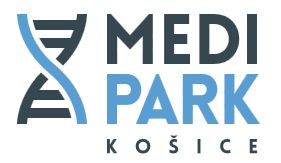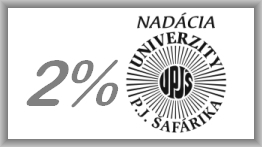Low temperature physics has a more than fifty years long tradition in Košice. The idea to establish a new research topic in Slovakia came in 1965 from Prof. Vladimír Hajko. The implementers of the idea was Ing. Štefan Jánoš, now Professor Emeritus at the University of Bern, who came to Košice in August 1967 as a young graduate from the Czech Technical University in Prague. He began, together with the engineers Alfréd Gréser, Ladislav Kováč and Radomír Mlýnek, to build up the foundations of a low-temperature infrastructure and carried out the first low-temperature experiments at the Department of Experimental Physics, Faculty of Science UPJŠ. On November 30, 1968, first helium was liquefied at the Faculty of Science, marking the start of the low-temperature physics research in Košice. In spring 1969, A. Feher (one of the current leaders of the team) came to the low-temperature laboratory as a research adjunct and became the first doctoral student supervised by Prof. Š. Jánoš. First experimental works were devoted to the study of electrical and thermal conductivity of iron, graphite, rare-earth metals, as well as their thin layers. Part of this results formed the basis of the RNDr. (results of the thermal conductivity of iron and graphite) and Ph.D. (observation of magnon contribution in the thermal conductivity of light rare earth metals) theses presented by A. Feher. In the early 1980s, Š. Jánoš left for the Institute of Experimental Physics of the Slovak Academy of Sciences (IEP SAS) where he established the Department of Low Temperature Physics, and the lead of the team was taken over by A. Feher. At this time, a joint project was launched, the construction of the device for reaching submilikelvin temperatures by the method of nuclear adiabatic demagnetization. In 1988, a group led by A. Feher (J. Nyéki, P. Skyba E. Gažo, V. Makroczyová), obtained the lowest temperature in the former Czechoslovakia (0.00175 K) and the research of the magnetic properties of superfluid helium-3 was launched. This research led to unique results published in the most prestigious journals and presented as an invited lecture at the International Conference on Low Temperature Physics in 1993. Simultaneously, a new topic of research of thermodynamic and transport properties of low-dimensional magnetic systems was implemented, alongside with gradual formation of the QMAGNA team. In 1987 M. Orendáč, a graduate from the Czech Technical University in Prague, came to the team, bringing his experience in the field of high-frequency electronics. He obtained his Ph.D. degree in 1996 and quickly developed into an excellent physicist with an amazing flair for experimental work in an international milieu. Now, Prof. M. Orendáč is one of the leaders of the team and the carrier of new physical ideas. In 1999, A. Orendáčová defended her dissertation theses and decided to continue in the research and teaching activities at the Faculty. Today, Assoc. Prof. A. Orendáčová, DrSc., is the chief scientific “ideologue” of the team and the creator of new ideas. In her research work, she is extremely purposeful, thorough and excellent in linking theory with experiment. The team managed to succeed, in mid-1990s, to publish in the most prestigious scientific journals thanks to M. Orendáč and A. Orendáčová. Later, another Ph.D. graduate, E. Čižmár, joined the team effort in the research of low-dimensional magnetism. He completed two long-term postdoctoral research stays at the University of Gainesville (Florida, USA) and at the Dresden High Magnetic Field Laboratory (Germany). After returning to the team, he brought in valuable international contacts, research experience gained in top international teams and a new methodology of electron paramagnetic resonance, which he also gradually implemented in our laboratory. At the beginning of the 21st century, nanoscience and nanotechnology became one of the main research priorities, and therefore the QMAGNA team slowly began to focus on the research in these fields. We managed to attract to our team two scientists who completed their Ph.D. studies at prestigious universities abroad and worked there. These were Dr. V. Komanický, who received his Ph.D. degree at the University of California in Davis and completed a postdoctoral stay at the Argonne National Laboratory, and Dr. T. Samuely, a Ph.D. graduate from the University of Basel (Switzerland) and a postdoctoral fellow at the Catholic University of Leuven (Belgium). Dr. V. Komanický gradually built up nanotechnology laboratories and now focuses his work on the surface physics and chemistry. Dr. T. Samuely implemented the methods of material studies in ultra-high vacuum and now investigates the magnetic aspects of nano-superconductivity. Recently, two former PhD students of Assoc. Prof. A. Orendáčová and postdocs at Charles University in Prague joined the team, namely Dr. R. Tarasenko and Dr. V. Tkáč.
History
Study at UPJŠ















